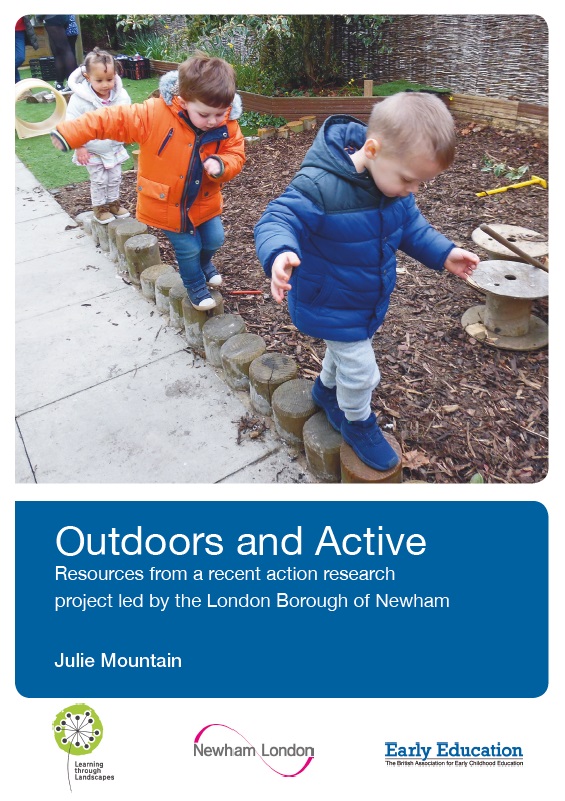
Outdoors and Active – an action research project commissioned by the London Borough of Newham – took practitioners from nurseries, schools, PVI settings and children’s centres on an eight-month long exploration of movement in 2- and 3-year-olds, which generated intriguing discoveries and practical, realistic changes to routines, resources and risk taking. Motivated by the shocking and […]
Busy modern lives are having a dramatic impact on the health and wellbeing of our youngest children. They play outdoors less, spend more time being transported in cars and pushchairs rather than walking, and are leading increasingly sedentary lives. At Newham, we wanted to tackle the rising obesity crisis in partnership with our early years […]
Little or no equipment is needed to get children active in the park – not even the play equipment that’s probably already there! If there is play equipment, encourage children to use it in new and challenging ways (eg walk up the slide, hang upside down from the monkey bars). For all of these actions, the Outdoors […]
Even everyday journeys and mundane chores can be used to encourage children to be more physically active. Here are some ideas, suggested by the Outdoors and Active project team: Use the stairs whenever you can. Start by encouraging children to use the stairs in the home or in flats, shops and when out and about. If […]
Toddlers need plenty of balance practice once they are up and walking. Each of the three semi-circular canals in the inner ear respond to movement in different planes. Types of movement enjoyed by toddlers and young children that help train the balance mechanism or vestibular system include: BOING… up and down movement on the vertical axis such as […]
An early task for the Outdoors and Active action researchers was to identify the barriers to taking children out and about beyond the setting. Only by finding out what was preventing practitioners and parents from being more active with their children, could we come up with solutions. These were the obstacles that were identified most […]
Human beings are “hardwired” to take risks, from birth. Babies take their first independent breaths; they decide to try crawling and walking and then running; they try new foods; they see a tree and want to climb it. Sadly, an increasingly risk averse society is making physically active, playful risk taking ever more difficult for […]
Traditional fixed play equipment is not necessary for physicality; if it’s there, then great – use it. Most of the Outdoors and Active project settings had little or no money to spend on improvements to their play landscapes, so it was necessary to adopt an alternative approach to getting children physically active. That approach was […]
Children can have fun and be active in any kind of landscape, but there’s no doubt that the more diverse and intriguing the space, the more likely it is that children will be drawn to explore it with their whole bodies. The Outdoors and Active project settings typify the range of outdoor spaces children have […]
To audit the current provision for physical development outdoors in your school or setting, you can download our three sample audit sheets below. You should try to audit how your outdoor space is being used on several different occasions, so you can capture how it may be used at different times of day, in various weather […]

